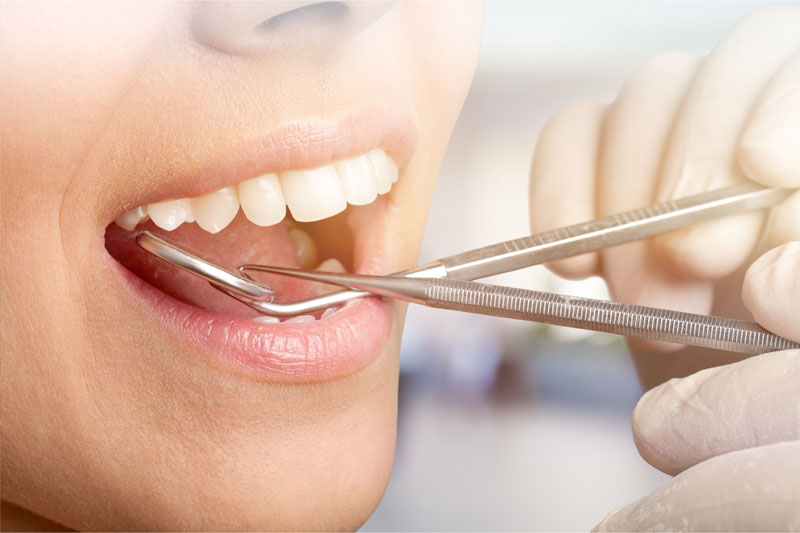Adults over 35 lose more teeth to gum diseases (periodontal disease) than from cavities. Three out of four adults are affected at some time in their life. The best way to prevent cavities and periodontal disease is to perform daily good tooth brushing and flossing techniques.
Periodontal disease and decay are both caused by bacterial plaque. Plaque is a colorless film, which sticks to a person’s teeth at the gumline. Plaque constantly forms on a person’s teeth. When people thoroughly brush and floss their teeth daily, they can remove these germs and prevent themselves from having periodontal disease.
Interested in learning more about how people can maintain good oral hygiene in Bronx, NY? Continue reading to learn more about how people can maintain good oral hygiene.
How Should I Brush My Teeth To Maintain Good Oral Hygiene?
If a person has any pain while brushing their teeth, or have any questions about how to brush properly, they should go to a quality dental professional’s practice. The dental professional will recommend the patient using a soft to medium toothbrush. They should position the brush at a 45-degree angle where their gums and teeth meet.
The patient should then gently move the brush in a circular motion several times using small, gentle strokes, brushing the outside surfaces of their teeth. They should use light pressure while putting the bristles between the teeth, but not so much pressure that they feel any discomfort. When people are done cleaning the outside surfaces of all their teeth, they should follow these same directions while cleaning the inside of their back teeth.
In order to clean the inside surfaces of the upper and lower front teeth, the person should hold their brush vertically. They should make several gentle back-and-forth strokes over each tooth with their brush, while also gently brushing the surrounding gum tissue.
Next the person will clean the biting surfaces of their teeth, by using short, gentle strokes. They should change the position of the brush as often as necessary to reach and clean all of their tooth surfaces. They should watch themselves in the mirror to make sure they clean each tooth surface properly. After they are done, they should rinse their mouth vigorously to remove any plaque they might have loosened while brushing.
How Should I Floss My Teeth To Maintain Good Oral Hygiene?
Periodontal disease usually appears between the teeth where a person’s toothbrush cannot reach. Flossing is a very effective way to remove plaque from those surfaces. However, it is important to develop the proper technique to floss. The following instructions will help people floss their teeth properly.
People should start with a piece of floss (waxed is easier) about 18” long. They should lightly wrap most of the floss around the middle finger of one of their hands. They should then wrap the rest of the floss around the middle finger of their other hand.
To clean their upper teeth properly, they should hold the floss tightly between their thumb and forefinger in each hand. They should then gently insert the floss tightly between their teeth using a back-and-forth motion. The floss should not be forced into place. The floss should be brought to the gumline, then curved into a C-shape against one tooth. The floss should then slide it into the space between the gum and the tooth until light resistance is felt.
The person should then move the floss up and down on the side of one tooth. Two tooth surfaces need to be cleaned in each space. The person should continue to floss each side of all of their upper teeth, being careful not to cut the gum tissue between their teeth. As the floss becomes dirty, the person should turn the floss from one finger to the other to get a fresh section of it.
To clean between their bottom teeth, the person should guide the floss using the forefingers of both their hands. They should get the back side of their last tooth on both sides, upper and lower. When they are done, the person should rinse their mouth vigorously with water to remove plaque and food particles.
They should not be alarmed if, during the first week of flossing, their gums bleed or are a little sore. If their gums hurt while flossing, they could be doing it too hard or pinching the gum. When people floss daily and remove the plaque, their gums will heal and the bleeding should stop.
How Should I Care For My Sensitive Teeth After Dental Treatment?
Sometimes after dental treatment, teeth are sensitive to hot and cold foods and drinks. This should not last long, but only if the mouth is kept clean. If the mouth is not kept clean, then the sensitivity will remain and could become more severe.
If a person’s teeth are especially sensitive after dental treatment, then they should consult with their dental professional. The dental professional may recommend a medicated toothpaste or mouth rinse made especially for their sensitive teeth.
Are There Good Products To Maintain My Oral Hygiene?
There are so many oral hygiene products on the market, it can become confusing and difficult to choose one. Here are some suggestions for choosing dental care products that will work for most people.
Electronic Toothbrushes:
Automatic and “high-tech” electronic toothbrushes are safe and effective for the majority of people to use. Oral irrigators (water spraying devices) will rinse a person’s mouth thoroughly but will not remove plaque. They will need to brush and floss in conjunction with the irrigator.
Excellent results are seen with Rotadent and Interplak toothbrushes. Some toothbrushes have a rubber tip on the handle, which is used to massage the gums after brushing. There are also tiny brushes (interproximal toothbrushes) that clean between the teeth. If these are used improperly, people could injure their gums.
Fluoride Toothpastes And Mouth Rinses:
Fluoride toothpastes and mouth rinses, if used in conjunction with brushing and flossing, can reduce tooth decay as much as 40%. These rinses, however, are not recommended for children under six years of age. Tartar control toothpastes will reduce tartar above the gum line, but gum disease starts below the gumline, so these products have not been proven to reduce the early stage of gum disease.
Anti-plaque rinses, approved by the American Dental Association, contain agents that may help bring early gum disease under control. Fluoride toothpaste and mouth rinses should be used in conjunction with brushing and flossing.
Should I Get A Professional Tooth Cleaning To Maintain My Oral Hygiene In Bronx, NY?
Daily brushing and flossing will keep dental calculus to a minimum, but a professional tooth cleaning will remove calculus in places the toothbrush and floss have missed. Getting regular tooth cleanings will help prevent people from getting gum disease. The following is everything people should know about professional tooth cleanings.
What Happens During A Tooth Cleaning Procedure?
During a tooth cleaning procedure, the dental hygienist utilizes specialized tools to meticulously remove the hard buildup of plaque and tartar that regular brushing and flossing at home might miss. These tools include scalers and curettes, which are designed to precisely fit the contours of the teeth and gumline.
The scaler is used with careful, gentle strokes along the tooth surface and gumline to scrape away tartar and plaque. This process is crucial for preventing gum disease and tooth decay, as it targets the area’s most susceptible to bacteria accumulation. The dental professional works methodically around each tooth, ensuring that all surfaces are thoroughly cleaned for the patient’s optimal oral health.
What Happens If Gum Disease Is Not Immediately Treated?
If gum disease is not immediately treated, the initial stage, known as gingivitis, can progress to a more severe condition called periodontitis. During this progression, the inflammation of the gums worsens and begins to destroy the bone and tissue that support the teeth. This occurs because the bacteria responsible for gum disease grow and produce toxins, which, along with the body’s natural response to infection, break down the bone and connective tissue.
As periodontitis advances, the pockets between gums and teeth deepen, housing more bacteria, leading to further bone and tissue damage. Without intervention from a skilled and trusted dental professional, the progression of gum disease will continue, eventually leading to the person having loose teeth and possible tooth loss.
How Can I Keep My Teeth Healthy And Functional?
Maintaining healthy and functional teeth requires people to keep routine dental care, which includes getting professional tooth cleanings every six months. These regular visits to the dental professional are critical, not only for the removal of plaque and tartar buildup that daily brushing and flossing might miss, but also for the early detection and treatment of oral health issues.
During these tooth cleanings, the dental professional will also check for cavities that, if found, need to be promptly filled to prevent further decay. Sealing cavities is a straightforward process that can significantly decrease the risk of future dental problems, as well.
These semi-annual dental check-ups allow the dental professional to assess the overall health of the patient’s mouth and to recommend specific treatments or preventative measures tailored to their specific needs.
See Us Now So We Can Help You Maintain Good Oral Hygiene
Why wait to improve your smile with us? Get in contact with Dr. Benjamin Katayev and our exceptional team at our Dental Group NY practice to schedule an appointment today!



